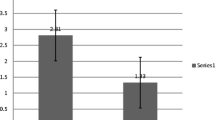Abstract
Objective: To explore the effect of Gushen tablet (GST) in reducing the relapse of children’s nephrotic syndrome and the possible mechanism of drugs used.Methods: Fifty children with primary nephrotic syndrome who had been induced and alleviated with regular glucocorticoid (GC) were randomly divided into two groups: the GST group used GST and standard middle-long term course of GC, and the control group adopted standard middle-long term course of GC and immunoinhibitory or immunomodulatory agents for treatment. The 0. 5, 1 and 2 years after the treatment the relapse episodes, time for urinary protein negative conversion after relapse, the episodes of patients infection and relapse after infection were evaluated. Before and after treatment the plasma cortisol and T lymphocyte subpopulation were determined.Results: The relapse rate of GST group: the rates after 0. 5, 1, 2 years were 20. 0%, 30. 0% and 40. 9%, and the frequent relapse rate were 0, 6. 7% and 9. 2% respectively, which were lower than those of control group (60. 0%, 70. 0%, 69. 2% and 25. 0%, 15. 0%, 15. 4% respectively); in the GST group no relapse occurred within 0. 5 year, the relapse rate after 1 and 2 years reduced by 40. 0% and 28. 3%, compared with those of the control group (allP < 0.05); during the observation period, the mean infection/every child patient was 1. 86 episodes in GST group, after infection the nephrotic relapse rate was 28. 3%, which was lower than that of the control group (2. 25 episodes, 71.1%,P < 0.05); the relapse per patient in GST group was 0. 8 episodes, time for urinary protein negative conversion was 12. 00± 8. 98 days, lower than those of control group (1. 6 episodes, 20. 75±11. 95 days,P < 0. 05); 3 months after GST treatment the plasma cortisol level normalized, and the CD4/CD8 ratio elevated (P < 0.05).Conclusion: GST could possibly reduce the relapse of children nephrosis, and the frequent relapse and relapse episodes, and the time for post-relaptic urinary protein negative conversion shortened, the plasma cortisol elevated, and the adjustment of cellular immunity disturbance promoted.
Similar content being viewed by others
References
WANG BL. Children nephrology. 1st edition. Beijing: People’s Health Publishing House, 1983: 165.
JIANG XY, CHEN RH, WANG BL. On suggestions of clinical classification and treatment of glomeruli diseases. Chin J Pediatr 1981;19(4): 241–242.
Ministry of Health PRC worked out and promulgated. Guiding principle of Chinese new drugs in clinical study of nephrotic syndrome. Guiding Principle of Chinese New Grugs in Clinical Study 1993; 1: 158–161.
WU L, GUO YQ, GUO MY, et al. Pathologic observation and clinical analysis of frequent relapse of nephrotic syndrome. Chin J Pediatr 1995;33(4): 237–238.
WU L, GUO YQ, GUO MY, et al. Follow-up observation of 47 cases of frequent relapse of nephrotic syndrome and analysis. Chin J Pract Pediatr 1996; 11 (3): 151–152.
GAO JL, WANG YQ. Clinical significance of adrenal cortical function monitoring on children hormone sensitive type of nephrosis syndrome. Chin Med J 1990; 70 (5): 273.
LIU AM. Cause of 59 cases of children nephrosis syndrome relapse. J Pract Pediatr 1995; 10(6): 341.
LIU JC, WANG BL, CHEN H. Therapeutic effect of corticosteroid middle long term treatment in treating primary nephrosis syndrome and its early stage prediction. Chin J Pediatr 1987; 25(2): 77–79.
NIU JZ, ZHANG Y, WANG ZG, et al. Study on antagonizing effect of Gynostemma glycosides on dexamethasone induced adrenal cortical change in mice. Chin J TCM Pharm 1990; 5(5): 17–19.
ZOU HQ, WANG YQ, KUANG YF. Exploration on mutual relationship of glucocortico-steroid in regulating circuit and simple nephrotic syndrome. Chin J Pediatr 1993; 31(5): 276.
ZHAO JL, XU XH, WANG BL, et al. Relationship between infantile simple nephrosis syndrome and adrenal cortical syndrome. Chin J Pediatr 1988; 26(4): 230–232.
WU L, XU SX, GUO YQ, et al. Controlled observation of adrenal cortical functional determination for frequently occurred nephrosis syndrome. Clin J Pediatr 1997; 15: (5)280–281.
JIANG CH, ZHONG XL, GU TJ, et al. Research on Shen. 2nd edition. Shanghai: Shanghai Science and Technology Press, 1983; 10: 122–123.
LIU YF, KANG JN, PENG YF, et al. Effect of gynostemma in treating deficiency syndrome and its effect on plasma cortisol. Pract J TCM 1993; 9(1): 21–23.
SHEN ZY. Orientated study of Shen yang deficiency. Chin J Integr Tradit West Med 1997; 17(1): 50–51.
WANG YQ, ZOU HQ, GAO JL, et al. Exploration on using astragalus and acanthopanax to reduce relapse of children primary nephrotic syndrome. Chin J Pediatr 1992; 30(3): 137–138.
Author information
Authors and Affiliations
Additional information
The item was supported by the Science and Technology Department of Henan Province (No. 941200528)
Rights and permissions
About this article
Cite this article
Ying, Y., Ya, G., Yu-hong, M. et al. Clinical study of Gushen tablet in reducing children’s nephrotic syndrome relapse. Chin. J. Integr. Med. 9, 185–190 (2003). https://doi.org/10.1007/BF02838029
Received:
Issue Date:
DOI: https://doi.org/10.1007/BF02838029




